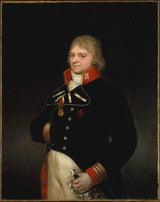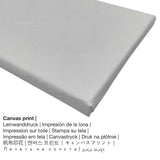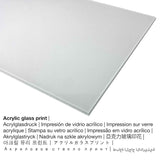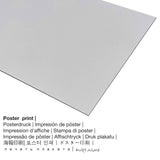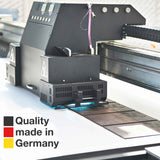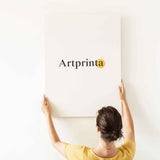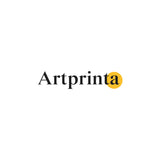Goya, 1804 - Ignacio Garcini na Queralt (1752-1825), Brigadier of Engineers - ọmarịcha nka.
Ụtụ gụnyere. Mbupu gbakọrọ na ndenye ọpụpụ.
Ozi ndabere gbasara ngwaahịa a
The modern art artwork was made by the painter Goya in 1804. Ihe gafere 210 afọ mbụ jikoro size nke 41 x 32 3/4 na (104,1 x 83,2 cm) ma were ihe osise ese Usoro of mmanụ na kwaaji. Besides, this work of art is included in the The Metropolitan Museum of Art's collection. The nkà nke oge a artpiece, nke dị na ngalaba ọha is being provided with courtesy of The Metropolitan Museum of Art, New York, Bequest of Harry Payne Bingham, 1955. Creditline of the artwork: Bequest of Harry Payne Bingham, 1955. Na mgbakwunye na nke a, nhazi ahụ bụ eserese na oke nke 3: 4, nke pụtara na ogologo bụ 25% mkpụmkpụ karịa obosara.
Họrọ ihe ị họọrọ
We offer a range of different sizes and materials for every product. Select your preferred size and material between the following alternatives:
- Akwụkwọ mmado ebipụtara (akwa akwa akwa): A poster print is a UV printed cotton canvas with a slightly rough finish on the surface, which resembles the actual version of the work of art. Please note, that depending on the absolute size of the canvas poster print we add a white margin between 2-6 cm around the painting, which facilitates the framing.
- Mbipụta kwaaji: A printed canvas, which shall not be confused with a painting on a canvas, is a digital replica printed on a UV direct printing machine. A canvas produces the unique effect of three dimensionality. Besides, printed canvas produces a familiar and enjoyable ambience. Your canvas of this artwork will allow you to transform your own art print into a large size artpiece as you would see in a gallery. The advantage of canvas prints is that they are relatively low in weight. This means, it is quite simple to hang up your Canvas print without any wall-mounts. Canvas prints are suitable for any kind of wall.
- Mbipụta nke aluminom: These are metal prints on aluminium dibond material with an impressive effect of depth. A direct Aluminium Dibond Print is your perfect start to fine art reproductions manufactured with aluminum. For the Print On Aluminum Dibond, we print the work of art right onto the surface of the white-primed aluminum. The bright and white parts of the artwork shimmer with a silk gloss but without any glow. The direct print on aluminium is the most popular entry-level product and is a truly sophisticated way to showcase fine art reproductions, as it draws attention on the image.
- Mbipụta iko acrylic na-egbuke egbuke (nke nwere ezigbo mkpuchi iko): The print on acrylic glass, which is often named as a print on plexiglass, will turn an original into wall décor and forms a good alternative option to canvas or aluminium dibond fine art replicas. The artwork will be made with state-of-the-art UV print technology. This has the effect of rich, impressive color tones. The acrylic glass protects your custom art replica against light and external influences for between 40-60 years.
Legal disclaimer: We try everythig possible in order to depict our art products with as many details as it is possible and to illustrate them visually in our shop. Still, the colors of the printing material and the print result might differ to a certain extent from the presentation on the device's monitor. Depending on your screen settings and the quality of the surface, colors might not be printed as realistically as the digital version shown here. Given that the fine art prints are printed and processed manually, there may as well be minor deviations in the exact position and the size of the motif.
Banyere ngwaahịa
| Nkewa edemede: | ezi nka mmeputakwa |
| Mmeputakwa: | dijitalụ mmeputakwa |
| Usoro mmepụta: | Mbipụta UV ozugbo |
| Nlụpụta: | emepụtara na Germany |
| Stockdị ngwaahịa: | mmepụta ihe na-achọ |
| Ojiji ngwaahịa: | ihe ndozi mgbidi, ụlọ ihe osise nka |
| Nhazi onyonyo: | usoro eserese |
| Ụdị anya: | ogologo: obosara - 3: 4 |
| Mmetụta akụkụ: | ogologo bụ 25% mkpụmkpụ karịa obosara |
| Ụdị dị iche iche dị: | ígwè ebipụta (aluminium dibond), acrylic glass print (nwere ezigbo mkpuchi iko), mbipụta akwụkwọ mmado (akwụkwọ kwaaji), akwụkwọ akwa akwa. |
| Mpempe akwa akwa (akwa akwa na etiti ihe ndọtị) nha: | 30x40cm - 12x16", 60x80cm - 24x31", 90x120cm - 35x47", 120x160cm - 47x63" |
| Mbipụta iko acrylic (nke nwere ezigbo mkpuchi iko): | 30x40cm - 12x16", 60x80cm - 24x31", 90x120cm - 35x47", 120x160cm - 47x63" |
| Ụdị akwụkwọ mmado (akwụkwọ kwaaji) dị iche iche: | 30x40cm - 12x16", 60x80cm - 24x31", 90x120cm - 35x47" |
| Nhọrọ nha nha nke Dibond (ihe alumnium): | 30x40cm - 12x16", 60x80cm - 24x31", 90x120cm - 35x47" |
| Nhazi nke nnomi nka: | adịghị |
Ozi ahaziri na nka
| Aha nke ihe nka: | "Ignacio Garcini and Queralt (1752-1825), Brigadier of Engineers" |
| Nhazi: | sere |
| Okwu mkpokọta: | nkà nke oge a |
| Century: | 19th narị afọ |
| Year: | 1804 |
| Ogologo afọ nka nka: | karịa afọ 210 |
| Usoro nka izizi: | mmanụ na kwaaji |
| Akụkụ nke ọrụ nka mbụ: | 41 x 32 3/4 na (104,1 x 83,2 cm) |
| Egosiputara na: | Museumlọ ihe ngosi nka nke Obodo |
| Ebe ngosi nka: | New York City, New York, Njikota Obodo Amerika |
| ibe weebụ nke Museum: | www.metmuseum.org |
| Ụdị ikike nka: | ngalaba ọha |
| Site n'aka: | The Metropolitan Museum of Art, New York, Bequest of Harry Payne Bingham, 1955 |
| kreditline ọrụ nka: | Bequest of Harry Payne Bingham, 1955 |
Tebụl metadata omenkà
| Aha onye nka: | Goya |
| okike onye nka: | nwoke |
| Obodo onye nka: | spanish |
| Ọrụ: | onye na-ese ihe |
| Mba onye si: | Spain |
| Nhazi nke onye nka: | omenkà nke oge a |
| Afọ ọnwụ: | 82 afọ |
| Afọ ọmụmụ: | 1746 |
| Afọ ọnwụ: | 1828 |
Edochiri ederede a site na nwebiisinka © | www.artprinta.com (Artprinta)
Ozi mgbakwunye sitere na The Metropolitan Museum of Art (© Nwebiisinka - nke Ụlọ ihe ngosi nka nke Obodo ukwu - www.metmuseum.org)
An official in the War Department, Ignacio Garcini wears the uniform of the Corps of Engineers. The embroidered red cross on his coat and the badge of the Order of Santiago are decorations he received in 1806 and must have been added after the painting was signed. After the French invasion of Spain in 1808, Garcini became a collaborator, and in 1811 he wrote the book Chronicle of Spain Since the Reign of Charles IV: Account of the Persecution Suffered by Colonel D. Ignacio Garcini.

